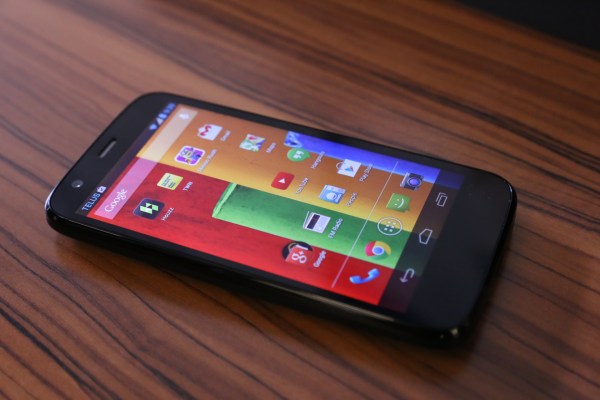Today Motorola unveiled its Moto G smartphone, which is related to the Moto X in many ways, but very different in others. I had the chance to try out the Moto G in person at Motorola’s Canadian HQ in Toronto, and in many ways, it’s a very impressive device. In others, however, it still reveals its cost consciousness.
One of the first things I noticed was that the phone feels a little chubby. It’s relatively thick compared to premium smartphones like the Moto X or the Nexus 5, but that’s to be expected considering the screen it’s packing and the price. Display tech costs a lot when you’re trying to reduce thickness, less so when you’re unconcerned on that score.
[gallery ids="914160,914161,914162,914163,914164,914165,914166,914167,914168,914169,914170,914171,914174,914175,914176,914179,914180,914182"]
The size is not offensive, however; it’s a comfortable phone in the hand, and the 4.5-inch screen is much more my speed when compared to some of the gargantuan displays out there. Resolution is crisp, too, with 329 ppi screen density that’s roughly on par with the iPhone’s own Retina display. Motorola still tends to favor high contrast, exaggerated saturation on their screens, though it’s much less pronounced than on devices Motorola made before the Moto X.
Performance on the Moto G really is quite impressive for a phone that costs less than $200. Animations and transitions are all smooth, and the only time you encounter any kind of stutter is on image-heavy websites, where you’ll get a little bit of stickiness with scrolling. That’s still an issue with some high-end Android smartphones and tablets, however, so it’s not really a major complaint. Motorola talked up the speed with which it loads things like the dialer and browser, and side-by-side with a Nexus 5, speed did indeed at least on par, which is astounding considering the difference.
The matte back has a nice feel, and there are textured plastic back accessories that you can swap in and out, including one that features a cover flap for the front. This is one area where some users might encounter some frustration, as removing the back plate is actually quite tricky. A number of us gadget bloggers had some trouble until a Moto rep showed us that you pull from the Micro USB port, and pull quite hard (harder than you might assume will be safe). It does offer a lot of customization options, however, including one type of case that includes a shock absorbent bumper.
The bottom line is that while you can nitpick at the Moto G from the perspective of someone who regularly uses various $600 smartphones, this is a remarkable device that has the potential to blow up the mid-tier market. If Motorola continues to innovate in this direction, I wouldn’t be surprised by a seismic shift in what Android OEM owns the developing market.
